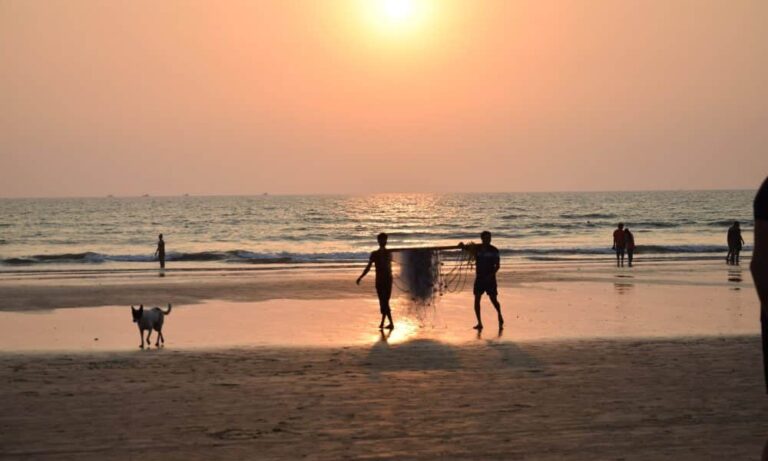Nestled along the sun-drenched shores of India’s west coast, Goa has long been beloved for its laid-back charm, slow pace of life, vibrant culture, and pristine beaches. It is often referred to as Susegad, derived from the Portuguese sossegado (quiet). Initially very popular with international tourists, over the years it has transformed from a dream destination to an annual must-visit for domestic travelers. Goa, by its very nature, has also infiltrated Indian pop culture as a place to slow down and get away from it all. However, recent shifts in tourist trends have called for a critical reassessment. How sustainable will Goa’s tourism industry be if it continues on its current path? As someone who has witnessed the evolution of Goa’s attractions over the years, I look forward to positive changes and course corrections, but as a resident I am concerned by the lack of action.
A wake-up call for Gore
In 2023, Goa will see a staggering 25% decline in tourist numbers compared to pre-pandemic 2019. A 40% increase in beach pollution and marine litter over the last five years is alarming and requires immediate action to maintain ecological balance and promote sustainable tourism. At the height of the tourist season, from November 2023 to March 2024, Goa was the quietest I have seen (excluding COVID periods). It was a devastating blow for many businesses as they went bankrupt or struggled to make ends meet.
However, this downturn can be seen as an opportunity to reshape and recover Goa, diversify its attractions and encourage people to stay longer and explore Goa more responsibly than ever before. The challenges facing Goa’s tourism industry are clear and a time of recovery that balances attracting quality tourists with protecting the local community is the only way forward.
Current trends and challenges
Goa’s quest to become a luxury destination has inadvertently taken it away from its affordable roots. To remain competitive in the global tourism market, Goa needs to redefine itself by reintroducing affordability along with quality and luxury. Comparisons with destinations in Southeast Asia highlight many aspects, including the cost of travel. Not only are airfares and hotel rates expensive, but even homestays and Airbnb costs have soared. Not only are prices increasing, but quality is also decreasing with every dollar spent. It is inevitable that it will be constantly compared to destinations like Thailand, Vietnam, Indonesia, Sri Lanka and even the pricey Maldives. Just as ambitious Indian travelers are drawn to international locations, so too are global travelers finding it more cost-effective to choose other destinations over Goa.
Strengthening safety and security is a must, given recent incidents of crime and drug abuse. This is a cyclical issue and whether it is public transport, taxis or rentals, costs need to be controlled. Local businesses charge high fees due to low footfall, and at the same time, high fees scare away tourists. Also, with Uber and Ola yet to make it in Goa, the cost and safety of local travel in Goa is fast becoming a key factor in the decision. Addressing infrastructure issues, public transport and waste management facilities will provide a good experience for tourists and will help show Goa in a new light.
Environmental issues such as beach pollution, public nuisance and open defecation require immediate attention. Reports have shown an increase in open defecation at popular beaches, which is often due to tourists not having proper sanitation facilities. While efforts need to be made to improve sanitation facilities, tourists also need to be checked and held accountable. Possible measures include charging entry fees in certain areas, imposing fines for littering and restricting the movement of large vehicles such as private buses. Raising awareness about Goa’s philosophy of environmental awareness, littering and respect for public spaces is necessary by laying down rules to preserve the natural beauty and foster a healthier environment for residents.
Also read: Goa’s Calangute Council to set up checkpoints to crack down on illegal activities, impose entry tax on tourists Rebranding Goa
Truly reviving tourism in Goa requires a multi-pronged approach. Domestically, re-branding Goa beyond beaches, parties and nightlife, leveraging its cultural richness and promoting responsible tourism practices can attract a diverse domestic market. Internationally, promoting eco-friendly initiatives, cleanliness and safety, luxury holidays, adventure activities and authentic cultural experiences can help win back a global audience.
Collaboration and community engagement
Collaboration is key to sustainable development. Public-private partnerships, community engagement and technology adoption can deliver equitable benefits to industry and communities. Involving communities in tourism planning and development fosters a sense of ownership and responsibility, ensuring active engagement and benefits.
Providing financial incentives such as tax breaks and subsidies can encourage the growth of responsible tourism businesses and infrastructure. Public awareness campaigns are essential to educate both tourists and locals on the importance of responsible tourism practices, environmental protection, and preserving Goa’s unique culture and heritage. Data-driven decision-making, including tourism data collection and analysis, can guide policymaking and resource allocation.
Transform now
Goa’s tourism industry is at a critical crossroads: the only way to restore its fading appeal and ensure it gets back on track is to adopt transformative policies, prioritise sustainability and actively engage local communities.
Goa is not just a place, it is a feeling. Let’s protect that feeling. As a Goan at heart, I believe in the power of collective action because the people I interacted with there are fed up and something needs to be done now. With tough love, we can ensure that Goa remains a vibrant and sustainable paradise for generations to come.

